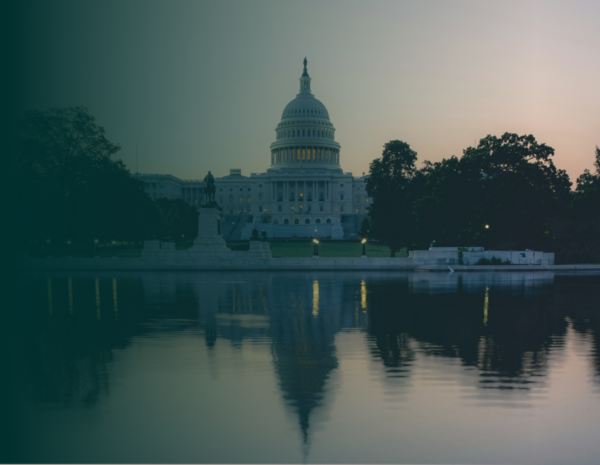A rapid response campaign is an organization’s effort to respond to key events. Learn how to use Plural for rapid response to public policy developments today!
Government relations and advocacy work require organizers to balance a focus on the past, present, and future. Advocates must use historical context like past legislative activity to inform their work. Doing so helps to:
- Ensure compliance with laws
- Inform policy positions
- Contextualize current events
At the same time, they must be forward-thinking. Proactively planning their organizations’ agenda and identifying upcoming threats or opportunities is key. Various processes and tools allow us to analyze past activity and anticipate what is to come. Often, the most challenging aspect of this work is responding to unexpected events or changes in the present.
This work is often referred to as rapid response. Rapid response can be as important to an organization’s advocacy strategy as past learnings or future agendas. But the irregular and unexpected nature of rapid response work can mean that this key aspect of a holistic advocacy process is overlooked in our day-to-day work. Although the events that may trigger a rapid response campaign are, by nature, sudden, effective rapid response management should be given time and focus in periods of crisis and calm. Read on to learn more about rapid response work within the government relations and advocacy space. Plus, we’ll discuss how Plural can set your team up for success in rapid response work.
What Is a Rapid Response Campaign?
In public policy work, rapid response refers to an organization’s efforts to respond to an emergent development, event, opportunity, or crisis. Events that might trigger a rapid response include:
- A positive event, such as a sudden legislative win
- A negative event, such as a public health crisis
- A specific event, such as an unexpected change in leadership at an organization
- A general event, such as an international security incident
Because rapid-response campaigns react to unexpected occurrences, strategies must be malleable and dynamic. When an event occurs, an organization with a proper rapid-response strategy will already have a game plan for determining its course of action.
A significant portion of rapid response is communications. Organizations need to quickly and effectively communicate their position, needs, or recommendations to their target audiences. This communications strategy often includes press releases, news conferences, and media engagements. As we see this play out in our daily lives, it can seem natural that a company will release a statement after receiving a large grant, or that a politician will hold a news conference following a natural disaster. However, such organized responses only take place after hours of preparation. When it comes to communications, it is important to consider factors such as who their audience is and how they want to reach them.
But communication is often just one aspect of a rapid response. Organizations also respond with direct action, policy changes, and material support. The onset of the COVID pandemic in 2020 provides us with countless examples of rapid response, including from within the public policy space. Organizations had to address the start of the pandemic and developments within it with clear communication. They also had to manage workplace safety decisions, public health protocols, and extra support for the most vulnerable.
Robust rapid response plans account for necessary communications as well as any additional action needed. They’ll also include a periodic review to analyze the effectiveness of implementations.
Key Steps to a Successful Rapid Response Campaign
As mentioned above, successful rapid-response campaigns begin far before the trigger event occurs. Each organization’s rapid response strategy should be customized to fit their specific needs and opportunities. However, we have listed a few core steps in rapid response planning and execution below.
Monitoring The Issues
First, it is important to understand which issues will require rapid response. For established organizations, this can be done by assessing organizational history. Find where communication or action has been made in the past. All organizations should clearly define the issues that require rapid response. Generally, this includes those that:
- Have a significant effect on the organization’s mission, purpose, or impact.
- Require the organization to act or communicate quickly. This could be due to an approaching deadline or because the organization needs to lead with communications.
It is worth applying a narrow definition of the two bullet points above. Doing so helps identify the most impactful issues to your organization. With this knowledge, it’s straightforward to identify what channels to monitor to stay on top of developments in that space.
Once you have determined the circumstances that trigger a rapid response, then assess how you can monitor these circumstances. Aim to identify a trigger event proactively, before it arises. In some cases, issues requiring rapid response will be publicized and therefore obvious. In others, an impactful issue may not be noticed by outside organizations or the news. Within this context, a timely response may rely on your ability to monitor your issue space. This issue often arises for advocacy issues working on very complex, but important, legislative issues. Often, the populations impacted by the issue at hand may rely on these advocacy organizations to identify a new policy proposal and discern what it could mean for them before taking action. Without a way to monitor public policy around-the-clock, organizations risk finding out about important developments when it is already too late.
Understanding Your Audience
Organizations should already be aware of their various audiences and how to reach them. While each rapid response strategy may involve different audiences, communication typically goes to:
Advocates and Affected Community Members
It’s important to have the ability to quickly contact those who may be impacted by a new policy development. This is especially true for non-profits or service organizations.
Media Members
The media can be a useful amplifier for your message, including press releases, announcements, or other key statements. Finding and building rapport with a diverse set of media members before you may need to contact them is vital.
Employees
Rapid response may be necessary to communicate information within your organization. This is especially true for large organizations. Be aware of not only who needs information, but also who they should receive that information from. Regularly review an organization chart to identify the pathways through which information should be shared.
Developing and Maintaining Organizational Information
When it comes to rapid response communication, it is important to identify what you want to say and who you want to say it to. Defined audiences from above can make your audience selection much more efficient. As for what you want to say, it will of course be reliant on the often unexpected situation at hand. Reference past communications, templated designs, and static background information, like your organization’s mission and history. This information should be readily available to review and utilize when forming communications.
It’s also important to have clearly defined decision-making roles within your rapid response strategy. Decision-makers can vary depending on the issue at hand. However, they should be as consistent as possible to ensure you are able to move quickly and decisively. Information about this structure should be communicated to those decision-makers so they are aware of and prepared for their role.
Reacting Quickly
Rapid response is only as effective as it is timely. Traditional announcements, positions, or actions taken by an organization may be deliberated over and planned for months. Rapid response reactions must maintain the same level of validity and clarity while being made within hours or days. Once your rapid response processes are set up, reacting quickly should be as easy as following protocol. It’s important to trust the established process while also taking note of where it could be improved.
Engaging With Partners and Stakeholders
A core team of decision-makers is important for moving quickly and efficiently. However, there may be additional stakeholders that should remain apprised of your activity. Generally, it can be helpful to think of this audience as those you want to keep informed, but don’t necessarily need approval or consultation from. A common example is a partner organization working in a similar space. You may want to keep this aligned organization apprised of any positions or actions you are taking. Doing so helps ensure consistency and efficiency. It also helps build rapport and trust with stakeholders, while also decreasing the likelihood of mixed messages reaching your audience.
Evaluating Your Impact
As with any organizational process, it is important to track performance and find areas for improvement. Depending on your organization, your rapid response protocol may be utilized five times during a legislative session, or once a year. Regardless of the frequency of use, consistently review the impact of each use. One easy strategy is to create a form or survey for those involved in the process. Questions could include:
- How would you define the primary objective of this rapid response campaign?
- Who would you define as the audience of this rapid response campaign?
- Do you feel we achieved our objective? Why or why not?
- Do you feel we reached our audience? Why or why not?
- What went well during the campaign?
- What could have gone smoother throughout the campaign?
Using Plural for Rapid Response Campaigns
Regulatory action is a common source of anxiety and impact for organizations of all sizes. Legislative intelligence tools like Plural are extraordinarily useful within the rapid response context. Plural’s AI-based productivity features are a key differentiator when it comes to rapid response.
Plural allows for improved and automated legislative monitoring through intelligent searches. Your searches will run constantly in the jurisdictions of interest to you. When developments arise, you’ll be notified in real-time. Whether it is an unexpected amendment, an upcoming public hearing, or the passage of a new law, Plural is the first step in the rapid response process.
Plural’s open data and collaboration features unlock new ways to engage your audiences and stakeholders. Our AI summarizes complex legislation into the simplest terms, enabling you to quickly take informed action. In addition, Plural’s public tags allow you to share customized lists of legislation with your audience, giving them all the information and tools they need to react. In all, Plural helps you bridge the gap between the government and your audience.
Finally, Plural’s flexible structure allows for you to organize and act from within the tool. Organizations use Plural’s Workspaces to communicate with various audiences, reviewing those communications alongside the source material. This is helpful within the process of reacting to a new legislative development. It also improves your ability to assess impact. This information will always be available to you to review, share, add to, and edit. Plural is your all-in-one rapid response home-base.
Beyond research, advocacy, and education, rapid response is a core use case for Plural. Interested in learning more about how Plural can work for your organization? Book a consult today!
More Public Policy Resources
Guide to Preparing for Congressional Testimony
Effective preparation for Congressional testimony requires a meticulous blend of strategy, knowledge, and execution. Download now!
Government Affairs Strategy Guide
This government affairs strategy guide equips your team with insights and tips to navigate interactions with government. Download now!
Georgia’s 2023-2024 Legislative Session: End-of-Session Report
Georgia legislators wrapped up their 2023-2024 legislative session early on Friday, March 29th. The adjournment brought to a close a session that was closely followed both nationally and by those within Georgia. Read our analysis.



